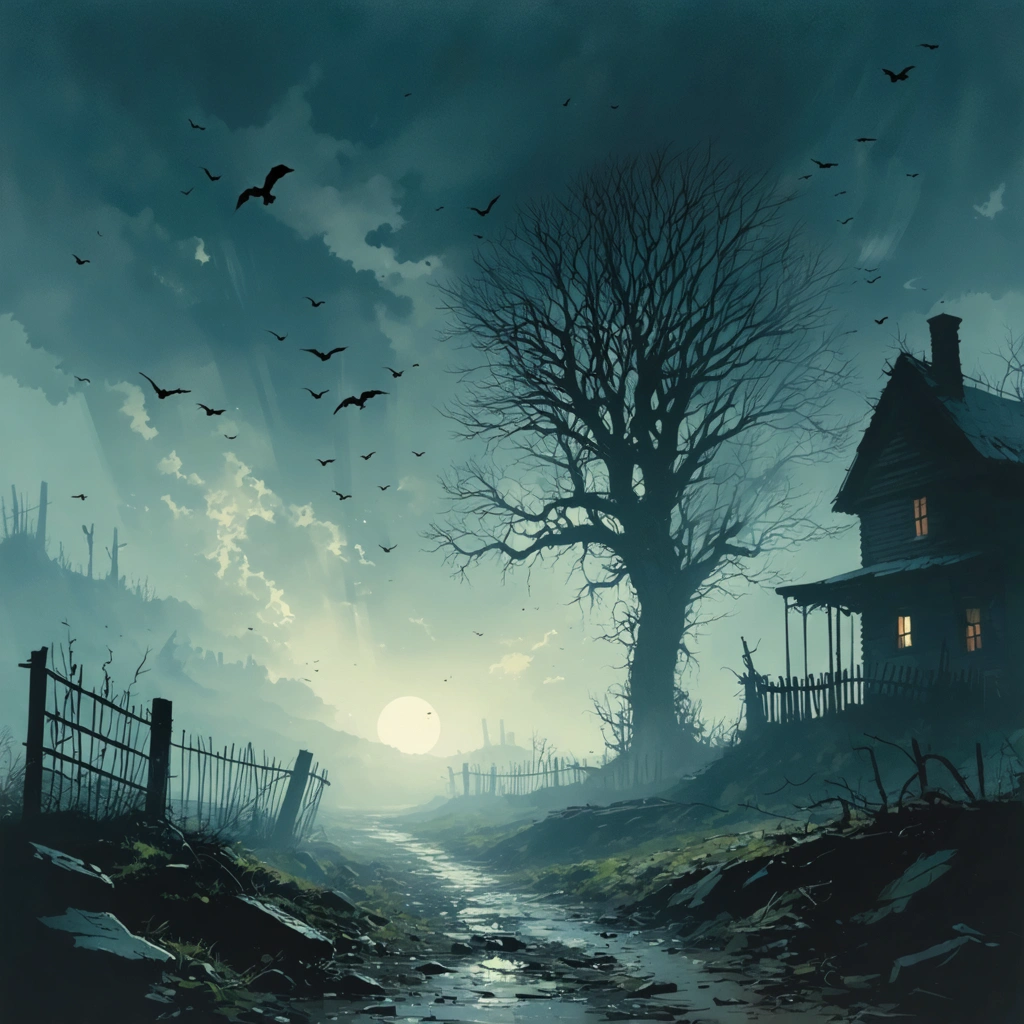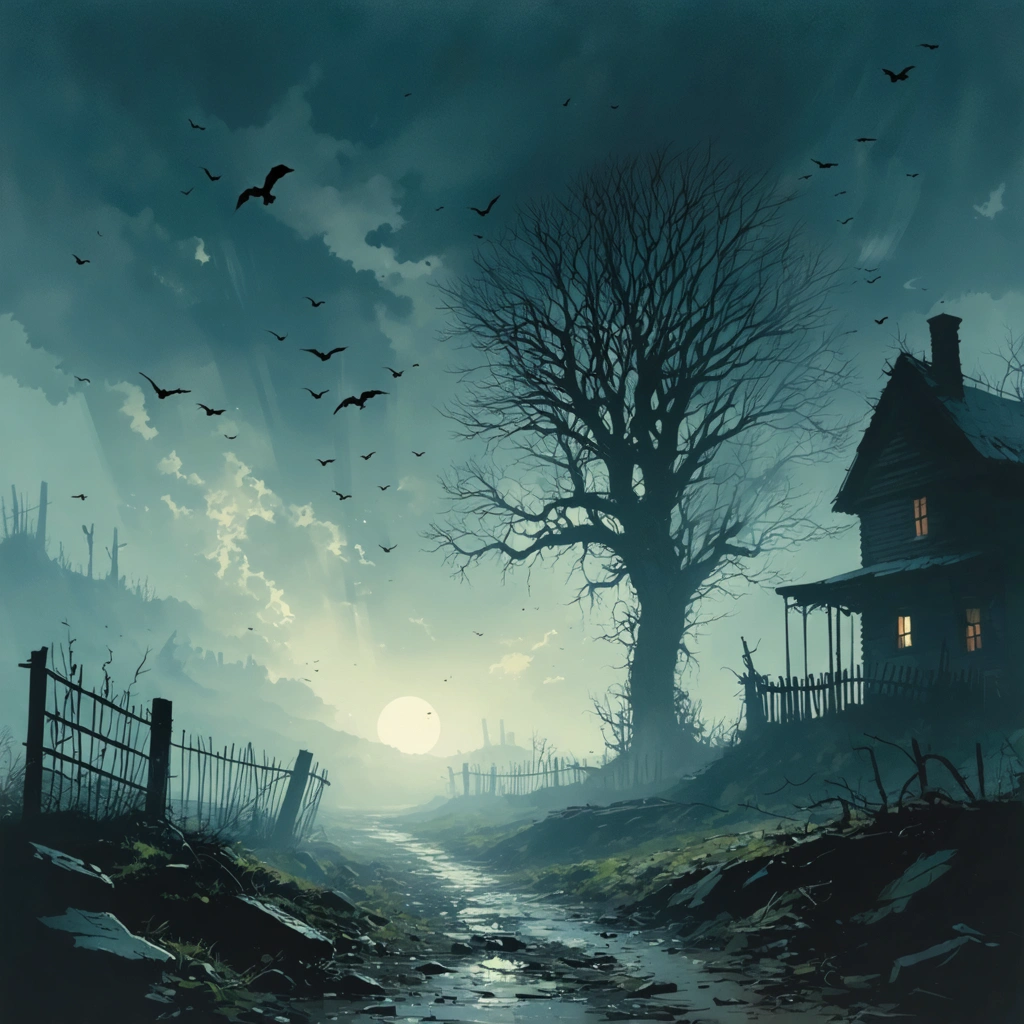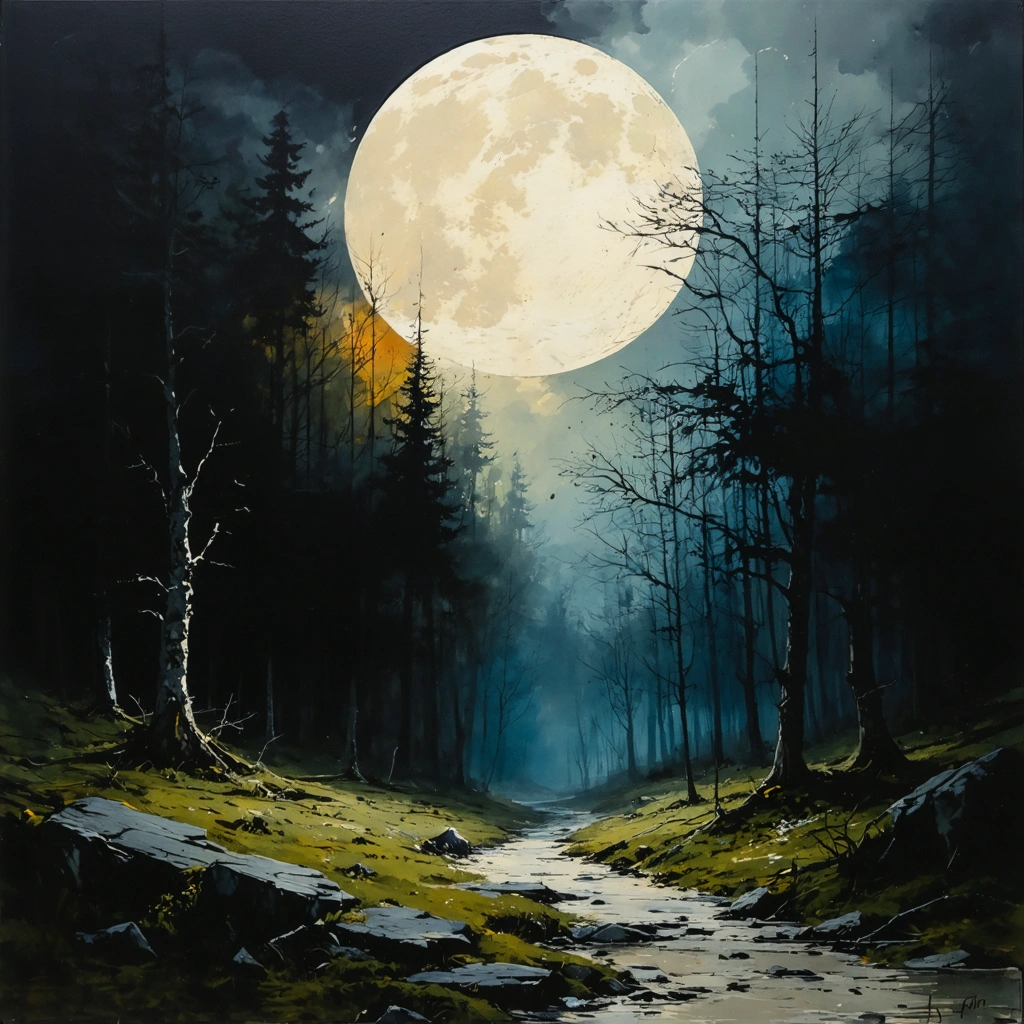
When Silence Speaks Louder Than Screams
Imagine a world where the loudest noise you can make might be your last. In the realm of horror films, sound typically conjures images of eerie music scores, sudden shrieks, or spine-chilling screams. But what if the absence of sound—the silence itself—became the scariest element? This is precisely the chilling atmosphere crafted by Un Lugar en Silencio, known internationally as A Quiet Place. It flips the traditional horror script, turning silence into an omnipresent force that tightens the grip on viewers’ nerves.
For decades, horror movies have relied heavily on jump scares and unsettling sounds to jolt audiences out of their seats. Yet, Un Lugar en Silencio invites us to reconsider what makes horror truly effective. Instead of bombarding us with noise, it strips away the auditory chaos, creating tension with what isn’t heard. This approach taps into a primal fear—how vulnerable we feel when we cannot make a sound, or worse, when every sound could spell doom.
The Silent Threat: How Un Lugar en Silencio Redefines Horror Films
What makes Un Lugar en Silencio stand out among countless horror films? It’s not just the story of survival or the terrifying creatures lurking in the dark; it’s the film’s masterful use of sound, or the eerie lack thereof, as a storytelling device. The audience is forced into a hyper-aware state, listening intently, feeling the weight of every breath, every step, every whispered word.
In many ways, this film challenges the viewer’s expectations. Instead of the usual cacophony of horror, the quiet place becomes a character itself—an invisible antagonist that demands silence above all else. This silent tension does more than scare; it immerses the audience in the characters’ fear, making every scene pulse with suspense.
- Heightened Sensory Experience: The absence of dialogue and background noise sharpens the viewer’s other senses, making even the smallest sound feel monumental.
- Emotional Connection: Silence forces a focus on facial expressions and body language, deepening empathy for the characters’ plight.
- Innovative Sound Design: The film’s soundscape is meticulously crafted, where silence and subtle noises play equal roles in storytelling.
By turning silence into a weapon, Un Lugar en Silencio doesn’t just scare—it unsettles, captivates, and redefines what a horror film can achieve.
Why Silence in Horror Films Captivates Us More Than Ever
In a world overloaded with constant noise—from the buzz of social media to the background hum of city life—silence has become a rare commodity. This scarcity makes the quiet moments in films like Un Lugar en Silencio all the more powerful. The film taps into an almost forgotten human experience: the unsettling stillness where every creak and whisper carries weight.
But beyond just being a refreshing change, silence in horror films creates a unique psychological tension:
- Anticipation Builds Naturally: Without loud cues, the mind fills in the gaps, often imagining something far worse than what’s on screen.
- Fear of the Unknown: The silence magnifies uncertainty, making the unseen threat feel omnipresent and inescapable.
- Immersive Storytelling: Viewers become active participants, listening closely and engaging more deeply with the narrative.
It’s no wonder that Un Lugar en Silencio has resonated so strongly with audiences worldwide. It proves that sometimes, the most terrifying sound is no sound at all.
What This Article Will Explore
Throughout this post, we’ll delve into how Un Lugar en Silencio harnesses silence as a powerful tool in horror filmmaking. We’ll examine:
- The innovative sound design that turns quiet into a narrative force.
- How silence intensifies audience engagement and emotional investment.
- Comparisons with other horror films that use sound differently.
- The psychological impact of silence on viewers and why it’s so effective.
If you’re a fan of horror films or simply curious about how sound—or its absence—can shape storytelling, this exploration of Un Lugar en Silencio will offer fresh insights into one of the most unique horror experiences in recent memory. Prepare to see silence not as emptiness, but as a powerful voice that speaks directly to our deepest fears.

A Quiet Place: How Silence Becomes a Powerful Horror Tool in Un Lugar en Silencio
Why is sound so crucial in horror films like Un Lugar en Silencio?
In horror films, sound design plays an essential role in shaping the audience’s emotional experience. Un Lugar en Silencio (A Quiet Place) elevates this concept by making silence itself a central narrative and atmospheric element. Unlike traditional horror films that rely on loud jump scares, un lugar en silencio uses the absence of sound to build tension and fear. This approach taps into a primal human sensitivity: when silence becomes unnatural or forced, it heightens our alertness and anxiety.
Sound in horror often signals danger, but silence in un lugar en silencio becomes an even more potent signal. The characters must remain quiet to survive, so any noise risks catastrophic consequences. This dynamic creates a constant undercurrent of suspense, making viewers acutely aware of every whisper or footstep. The film’s sound design integrates natural ambient sounds, subtle creaks, and muffled noises to amplify this effect, demonstrating how sound—or the lack thereof—can be as terrifying as any monster.
How does A Quiet Place use silence to engage viewers on a psychological level?
From a psychological perspective, silence in un lugar en silencio triggers a form of sensory deprivation that forces viewers to focus intensely. This hyper-awareness increases empathy with the characters, who live in a world where even the slightest sound can be deadly. The quiet place setting transforms everyday noises into potential threats, making the audience reconsider their own relationship with sound and silence in daily life.
Moreover, the film exploits the discomfort many people experience in prolonged silence, which can evoke feelings of isolation and vulnerability. By minimizing dialogue and ambient noise, the filmmakers encourage viewers to fill the silence with their imagination, often envisioning horrors far worse than anything shown on screen. This technique leverages the brain’s natural tendency to anticipate danger in ambiguous situations, deepening the psychological impact of the horror.
What are some specific techniques used in Un Lugar en Silencio’s sound design?
Un lugar en silencio employs several innovative sound design techniques to create its unique atmosphere:
- Selective amplification: Sounds that do occur—such as footsteps on gravel, breathing, or the rustling of leaves—are amplified to emphasize their significance.
- Dynamic range manipulation: The contrast between near silence and sudden loud noises shocks the audience, enhancing the jump scare effect.
- Use of silence as a narrative tool: Silence is not just an absence of sound but a storytelling device that conveys fear, tension, and urgency.
- Minimal dialogue: Characters communicate primarily through sign language and gestures, reducing verbal noise and reinforcing the film’s themes.
These techniques combine to create a soundscape that is immersive and unnerving, setting un lugar en silencio apart from many traditional horror films.
How has the use of sound in A Quiet Place influenced the horror genre?
Since its release, A Quiet Place has been widely recognized for redefining how sound is used in horror films. Industry experts note that its success has inspired other filmmakers to explore silence and sound more creatively, moving beyond the standard jump scare formula. Critics and audiences alike praise the film for its innovative approach, which balances narrative, performance, and technical mastery.
Box office statistics show that un lugar en silencio grossed over $340 million worldwide on a modest budget, highlighting that audiences are receptive to horror films that prioritize atmosphere and psychological tension over gore and noise. This trend has encouraged studios to invest in sound-centric horror projects that emphasize mood and suspense.
What can aspiring filmmakers learn from the sound design in Un Lugar en Silencio?
For filmmakers interested in horror or atmospheric storytelling, un lugar en silencio offers valuable lessons:
- Sound is a narrative element: Use audio deliberately to tell the story and build tension, not just to accompany visuals.
- Silence can be as powerful as sound: Don’t underestimate the emotional impact of quiet moments; they can heighten audience engagement.
- Minimalism enhances immersion: Reducing extraneous noise helps focus attention on key sounds and actions.
- Character interactions through non-verbal cues: Using sign language and gestures can add layers to storytelling and reinforce themes.
By studying how un lugar en silencio integrates these principles, filmmakers can develop richer, more compelling horror experiences that resonate with audiences on a deeper level.
Conclusion: Why is Un Lugar en Silencio a benchmark for using sound in horror films?
Un lugar en silencio stands out as a landmark film in the horror genre because it transforms silence itself into a source of terror. By crafting a soundscape where every noise matters and silence is a survival mechanism, it redefines how horror films engage audiences emotionally and psychologically. Its innovative sound design, compelling narrative, and character-driven tension offer a masterclass in using audio to elevate cinematic storytelling.
For anyone interested in the mechanics of horror films or the power of sound in cinema, un lugar en silencio provides a rich, instructive example of how a quiet place can be the most frightening place of all.


